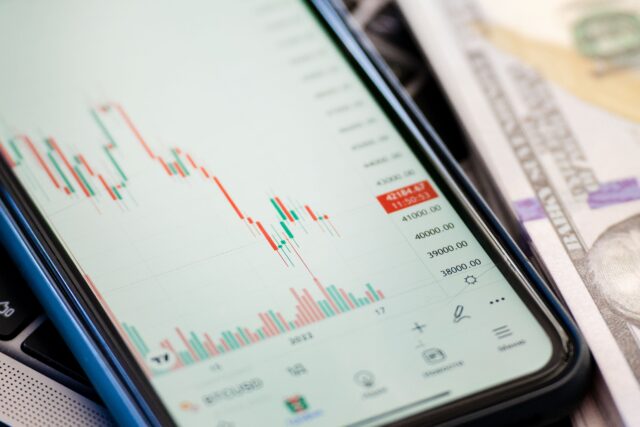
Exchange-traded funds (ETFs) have become a popular choice among investors due to their unique combination of the diversified exposure of mutual funds and the flexibility of individual stocks. ETFs are investment funds that are traded on stock exchanges, much like individual stocks, and they aim to track the performance of specific indices, sectors, commodities, or asset classes. The beauty of ETFs lies in their simplicity and affordability. Investors can buy and sell ETFs just like stocks, and they offer a low-cost way to diversify a portfolio across a broad range of securities. Whether you’re a seasoned investor or just starting out, understanding ETFs is crucial to your investment journey. In this guide, we will delve into the fundamentals of ETFs, discussing their structure, advantages, and potential risks. Read on to discover how you can incorporate ETFs into your investment strategy and take advantage of their many benefits.
Why Invest in ETFs?
ETFs are an attractive investment option for several reasons. As mentioned earlier, they provide investors with a simple way to diversify their portfolios. This means that instead of investing in individual stocks or bonds, which can be risky, investors can spread their investments across a wide range of securities. This diversification helps reduce risk because if one security underperforms, it will have less impact on the overall portfolio.
Another benefit of ETFs is that they are typically more cost-effective compared to other investment options. Traditional mutual funds often charge high management fees, which can eat into investors’ returns. In contrast, ETFs have lower fees, making them an appealing choice for cost-conscious investors.
Additionally, ETFs offer flexibility in terms of trading. They can be bought and sold throughout the day on stock exchanges, unlike mutual funds which are only priced once a day after market close. This means that investors have more control over their investments and can react quickly to market changes.
Types of ETFs

ETFs come in different types, each with its own unique characteristics and investment objectives. Some of the common types of ETFs include:
- Broad Market ETFs: These are funds that track a broad market index, such as the S&P 500, which represents the performance of the top 500 companies listed on US stock exchanges.
- Sector ETFs: These focus on a particular sector of the economy, such as technology, healthcare, or energy.
- Commodity ETFs: These track the performance of commodities like gold, oil, or agriculture products.
- Bond ETFs: These invest in a variety of bonds and provide investors with exposure to fixed-income securities.
- International ETFs: These focus on specific countries or regions outside of the US, providing investors with international diversification.
Where to Buy ETFs
Investing in ETFs is a process that’s made relatively easy and accessible through a variety of platforms. Brokerage accounts often offer a wide array of ETFs to choose from. These platforms can be traditional brick-and-mortar brokerage firms or increasingly popular online brokers. These online platforms often have tools and resources that help guide investors in selecting ETFs that align with their investment goals and risk tolerance. Additionally, some robo-advisors offer ETFs as part of their automated investment management services. If you are wondering how to buy ETF in Singapore, you can do so through brokerage accounts, online brokers, or even through ETF sponsors themselves. If you decide to buy ETFs through a brokerage account or online broker, make sure you do thorough research on fees and commission rates to ensure that you are getting the best deal. Having the right knowledge and understanding of where to buy ETFs can make all the difference in your investment journey.
Potential Risks
While ETFs offer numerous advantages, it is crucial to be mindful of potential risks, as is the case with any investment option. Market volatility poses one risk, given that ETFs track the performance of underlying securities, rendering them susceptible to market fluctuations and significant price swings.
Another risk to consider is tracking errors. ETFs aim to replicate the performance of a specific index or asset class, but any deviation from this benchmark can result in tracking errors. Consequently, an ETF may not perform exactly as expected, potentially leading to a loss for investors.
Liquidity risk is also worth noting. Although ETFs offer trading flexibility, some may have lower trading volume, making it challenging to swiftly buy or sell them at a desired price.
Lastly, it is essential to recognize that ETFs are not devoid of risk and can still result in a loss of capital. Investors must carefully evaluate their investment goals, risk tolerance, and conduct thorough research before venturing into any ETF.
Tax Implications of ETFs

Just as with any other investment, it’s essential to consider the tax implications of investing in ETFs. While the tax treatment of ETFs is generally favorable, it can still vary based on factors such as the type of ETF, the investor’s tax situation, and the country of residence. In general, any dividends received from the ETFs are typically subject to income tax. Capital gains from selling ETF shares could also be taxed, depending on the holding period and the specific tax laws in your country. Furthermore, some types of ETFs, such as commodity ETFs, might have unique tax considerations. It’s recommended that you consult with a tax advisor or a financial planner to understand the tax implications of your ETF investments better. Being aware of these potential tax obligations can help you plan your investments more effectively and potentially save on taxes.
Rebalancing Your ETF Portfolio
Maintaining a well-balanced ETF portfolio requires regular rebalancing. As the market fluctuates, your portfolio can deviate from its original investment strategy. For instance, a sector ETF that initially represented 10% of your portfolio may grow to 20% due to strong performance. Rebalancing involves adjusting the weights of your ETFs to realign with your intended asset allocation. This process not only helps preserve your desired level of risk and return but also offers an opportunity to reassess your investment goals and market outlook.
To rebalance effectively, it may be necessary to sell ETFs that have significantly appreciated and allocate more to those that have underperformed. While rebalancing can help manage risk and potentially enhance returns, it’s important to consider transaction costs and tax implications. Seeking guidance from a financial advisor before rebalancing your ETF portfolio is strongly recommended.
Overall, Exchange-Traded Funds (ETFs) present a versatile and cost-effective avenue for investors seeking to diversify their portfolios and gain exposure to a wide range of asset classes. With their straightforward structure and the added benefit of daily liquidity, ETFs have established themselves as an attractive choice for both beginner and seasoned investors. However, it’s crucial to keep in mind the associated risks and tax implications, and to maintain regular portfolio rebalancing. As with any investment decision, thorough research, careful planning, and consideration of personal financial goals and risk tolerance are necessary. By doing so, investors can leverage the manifold benefits of ETFs to potentially enhance their investment returns and achieve their financial objectives.


































